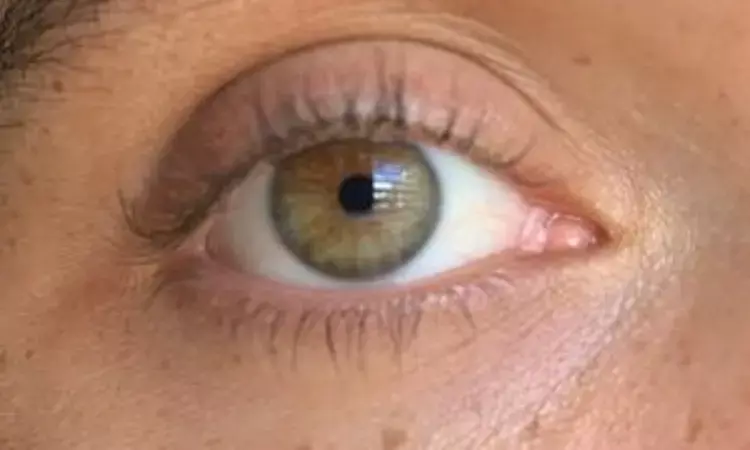- Home
- Medical news & Guidelines
- Anesthesiology
- Cardiology and CTVS
- Critical Care
- Dentistry
- Dermatology
- Diabetes and Endocrinology
- ENT
- Gastroenterology
- Medicine
- Nephrology
- Neurology
- Obstretics-Gynaecology
- Oncology
- Ophthalmology
- Orthopaedics
- Pediatrics-Neonatology
- Psychiatry
- Pulmonology
- Radiology
- Surgery
- Urology
- Laboratory Medicine
- Diet
- Nursing
- Paramedical
- Physiotherapy
- Health news
- Fact Check
- Bone Health Fact Check
- Brain Health Fact Check
- Cancer Related Fact Check
- Child Care Fact Check
- Dental and oral health fact check
- Diabetes and metabolic health fact check
- Diet and Nutrition Fact Check
- Eye and ENT Care Fact Check
- Fitness fact check
- Gut health fact check
- Heart health fact check
- Kidney health fact check
- Medical education fact check
- Men's health fact check
- Respiratory fact check
- Skin and hair care fact check
- Vaccine and Immunization fact check
- Women's health fact check
- AYUSH
- State News
- Andaman and Nicobar Islands
- Andhra Pradesh
- Arunachal Pradesh
- Assam
- Bihar
- Chandigarh
- Chattisgarh
- Dadra and Nagar Haveli
- Daman and Diu
- Delhi
- Goa
- Gujarat
- Haryana
- Himachal Pradesh
- Jammu & Kashmir
- Jharkhand
- Karnataka
- Kerala
- Ladakh
- Lakshadweep
- Madhya Pradesh
- Maharashtra
- Manipur
- Meghalaya
- Mizoram
- Nagaland
- Odisha
- Puducherry
- Punjab
- Rajasthan
- Sikkim
- Tamil Nadu
- Telangana
- Tripura
- Uttar Pradesh
- Uttrakhand
- West Bengal
- Medical Education
- Industry
Atrophic Extraocular Muscles frequently found in Myasthenia Gravis Patient with Ocular Manifestations

Myasthenia gravis (MG) is an autoimmune disorder of the neuromuscular junction, frequently mediated by anti-acetylcholine receptor antibodies (anti-AChR-Ab) and anti-muscle-specific tyrosine kinase antibodies (anti-MuSK-Ab). The diagnosis is usually based on clinical symptoms and signs. Common symptoms are fluctuation of double vision, drooping eyelids, limb weakness, and difficulties with speech, swallowing, and breathing.
Establishing a diagnosis can be challenging in treatment-resistant patients. It would be helpful if there is an additional test for clinical judgement. Magnetic resonance imaging (MRI) enables noninvasive visualization of muscles and extraocular muscles (EOMs). It is increasingly being used in the evaluation of muscle disorders. Besides, EOMs are commonly affected in MG. The goal of this study done by Lueangaram et al was to analyze the radiological patterns of the EOMs in MG cases with ocular manifestations.
This retrospective case–control study included all MG cases with ocular manifestations, who attended a neuro-ophthalmology clinic at a university hospital, Bangkok, from April 2009 to June 2018. They experienced double vision and ophthalmoplegia. Control participants had normal eye movements. Orbital scans were thoroughly reviewed. Authors measured muscle thickness (MT) of the superior rectus, inferior rectus, medial rectus and lateral rectus muscles in both eyes using magnetic resonance imaging or computed tomography scan. The sum of the muscle thickness at all sites was calculated (MTsum). MRI signal intensities of the EOMs were also recorded.
Twenty MG cases and 20 controls were included in the study. The mean MTsum was 23.7 (standard deviation 4.8) mm in the MG group and 32.6 (3.5) mm in the controls. There were statistically significant differences between the two groups with respect to the mean MT and mean MTsum (p <0.001). In the MG group, there was a negative correlation between the MTsum and disease duration (p= 0.03). By using coronal T2-weighted orbital MRI with fat suppression (T2W/FS), the most frequent finding was isointensity with central hypointensity of the EOMs in the MG group.
This study demonstrated EOM atrophy in the acute and chronic MG cases, being more pronounced in patients with long disease duration. Additionally, the EOM thickness in patients treated with prednisolone did not significantly differ from those without the treatment.
The findings indicate fat replacement in the EOMs in the early phase of the disease. Moreover, muscle atrophy also extends beyond the EOMs. There was MRI evidence of early muscle atrophy in anti-AChR-Ab MG in the posterior cervical, paraspinal, sternocleidomastoid, and masseter muscles.
A study of an anti-AChR-Ab-positive patient showed fibrosis in the SR, which corresponded with EOM atrophy in the orbital MRIs. Although fibrosis is a pathological feature of chronic inflammation, study observed atrophic muscles in some acute cases.
A limitation of this study was a possible selection bias that only patients with available scans were included. This limits the generalizability of the study results. Further cohort studies are required to address this issue.
Atrophic EOMs and isointensity with central hypointensity of the muscles on T2W/FS were frequently found in the MG group. EOM atrophy was found in the early course of the disease and becoming more prominent in chronic cases. These findings highlight the importance of muscle involvement in MG and may be helpful for clinical decision-making.
Source: Lueangaram et al; Clinical Ophthalmology 2021:15
Dr Ishan Kataria has done his MBBS from Medical College Bijapur and MS in Ophthalmology from Dr Vasant Rao Pawar Medical College, Nasik. Post completing MD, he pursuid Anterior Segment Fellowship from Sankara Eye Hospital and worked as a competent phaco and anterior segment consultant surgeon in a trust hospital in Bathinda for 2 years.He is currently pursuing Fellowship in Vitreo-Retina at Dr Sohan Singh Eye hospital Amritsar and is actively involved in various research activities under the guidance of the faculty.
Dr Kamal Kant Kohli-MBBS, DTCD- a chest specialist with more than 30 years of practice and a flair for writing clinical articles, Dr Kamal Kant Kohli joined Medical Dialogues as a Chief Editor of Medical News. Besides writing articles, as an editor, he proofreads and verifies all the medical content published on Medical Dialogues including those coming from journals, studies,medical conferences,guidelines etc. Email: drkohli@medicaldialogues.in. Contact no. 011-43720751


